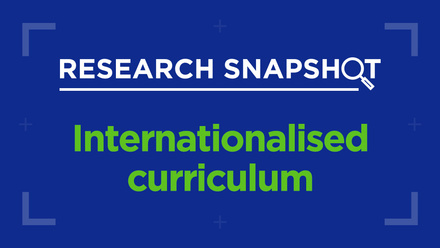E-BIPs popping up like mushrooms: Time for a more organised seeding

In recent years, Erasmus+ Blended Intensive Programmes (E-BIPs) have become a powerful addition to the Erasmus+ landscape. The mix of physical and virtual components that E-BIPs offer holds great potential for curriculum internationalisation and provides fertile ground for creative academic collaboration. It can also be a meaningful asset within the field of internationalisation at home, especially when international students bring cultural richness to the local classroom experience.
Great concept, chaotic execution
Yet, from the office desk of an Erasmus+ coordinator, the growing enthusiasm for E-BIPs can feel rather overwhelming. And curriculum internationalisation coordinators might be unaware of the strategic opportunities E-BIPs offer—opportunities that need to be intentionally and thoughtfully connected to the curriculum well in advance.
Lately, E-BIP invitations have been popping up like mushrooms after a rainy day—unexpected, sudden, and arriving from all directions. While each new offer presents a promising opportunity for both academics and students, they often arrive in a random, unsynchronised fashion. This makes it difficult to carve out the time and space needed to assess which ones are most relevant and suitable.
You’re checking your inbox in March, and there you go—two, three E-BIP invitations arrive from partner institutions. You’ve just forwarded them to the relevant departments when another one pops up the following week. By the end of the semester, you find yourself wondering: Should we expect more? Should we reserve part of our Erasmus+ budget just in case? Which invitations align with our institutional strategy or departmental goals? Can students realistically fit these into their packed academic schedules at such short notice?
It’s not the E-BIP format itself that’s frustrating—quite the opposite. The concept is promising and full of potential. What’s challenging is the lack of structure and predictability. Without a shared framework or common timeline for issuing and receiving E-BIP invitations, Erasmus+ coordinators are often forced into a reactive mode—guesstimating numbers and troubleshooting logistics on the fly instead of planning strategically.
Cultivating order
To fully leverage the potential of E-BIPs, we need intentional planning and co-creation between the participating partner institutions. Learning outcomes and collaborative international activities should be aligned early on and designed jointly, not just as an afterthought. Too often, there is insufficient time and attention given to the blended or online component of the programme. When this part is rushed or underdeveloped, students miss out on valuable intercultural and collaborative learning experiences. With better coordination and foresight, we could ensure that both the online and physical components are integrated and impactful.
That’s why it would be helpful if the Erasmus+ programme introduced a shared, transparent schedule for E-BIP invitations. Imagine a central pool or database of offers, open during a defined window each year. Academic staff could explore, select and prepare their participation in a way that is aligned with curriculum content and institutional priorities. It would allow for proper co-design, student preparation and better integration of the E-BIP into the academic year.
Such a change wouldn’t require a radical innovation—just a more centralised system and streamlined communication across the network. It would reduce administrative pressure and lead to more meaningful, curriculum-connected and student-focused international collaboration.
Until then, we Erasmus+ coordinators will keep doing our best to navigate the mushroom forest—compass in hand, inbox overflowing and optimism (hopefully) intact.
Summer is approaching, at last!






